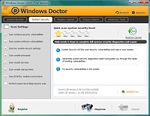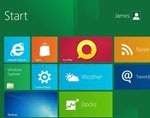Adobe Flash Player is software for content created on the Adobe Flash platform. Flash Player is capable of viewing multimedia contents, executing rich Internet applications, and streaming audio and video. In addition, Flash Player can run from a web browser as a browser plug-in or on supported mobile devices.
Adobe Animate (formerly Flash Professional) is an application for developing rich content, user interfaces, and web applications. Adobe Flash Player is a multiplatform client runtime. Web users must download and install Flash Player to view and interact with SWF content.
The two Adobe Flash Platform runtimes are Flash Player and Adobe AIR. Flash Player is a highly expressive cross-platform runtime that works consistently across browsers. Flash Player delivers innovation within the browser, while AIR, a superset of Flash Player, enables the delivery of standalone applications that run outside the browser. Together, they provide a consistent runtime for delivering content that can easily move between the browser and native operating system context.
Flash Player is available in Brazilian Portuguese, Chinese Simplified, Chinese Traditional, Czech, Dutch, English, French, German, Italian, Japanese, Korean, Polish, Russian, Spanish, Swedish, and Turkish on most major browser platforms.
Periodically, Adobe updates Flash Player with new features or fixes to minor problems. The Automatic Notification and Update feature allows Adobe to automatically notify you when an updated version of Flash Player is available so that you can install it right away.
Flash Player runs SWF files that can be created by Adobe Flash Professional, Adobe Flash Builder or by third party tools such as FlashDevelop. Flash Player supports vector graphics, 3D graphics, embedded audio, video and raster graphics, and a scripting language called ActionScript. ActionScript is based on ECMAScript (similar to JavaScript) and supports object-oriented code. Flash Player is distributed free of charge and its plug-in versions are available for every major web browser and operating system. Google Chrome, Internet Explorer 11, in Windows 8 and later, and Microsoft Edge came bundled with a sandboxed Adobe Flash plug-in.
Flash Player once had a large user base, and was a common format for web games, animations, and graphical user interface (GUI) elements embedded in web pages. However, the most popular use of Flash among the 10-20 age group was for Flash games. Adobe stated in 2013 that more than 400 million out of over 1 billion connected desktops update to the new version of Flash Player within six weeks of release. However, Flash Player has become increasingly criticized for its performance, consumption of battery on mobile devices, the number of security vulnerabilities that had been discovered in the software, and its closed platform nature. Apple co-founder Steve Jobs was highly critical of Flash Player, having published an open letter detailing Apple's reasoning for not supporting Flash on its iOS device family. Its usage has also waned because of modern web standards that allow some of Flash's use cases to be fulfilled without third-party plugins.
Adobe Flash Player is a runtime that executes and displays content from a provided SWF file, although it has no in-built features to modify the SWF file at runtime. It can execute software written in the ActionScript programming language which enables the runtime manipulation of text, data, vector graphics, raster graphics, sound, and video. The player can also access certain connected hardware devices, including the web cameras and microphones, after permission for the same has been granted by the user.
Flash Player was used internally by the Adobe Integrated Runtime (AIR), to provide a cross-platform runtime environment for desktop applications and mobile applications. AIR supports installable applications on Windows, Linux, macOS, and some mobile operating systems such as iOS and Android. Flash applications must specifically be built for the AIR runtime to use additional features provided, such as file system integration, native client extensions, native window/screen integration, taskbar/dock integration, and hardware integration with connected Accelerometer and GPS devices.
Flash Player included native support for many data formats, some of which can only be accessed through the ActionScript scripting interface.
- XML: Flash Player has included native support for XML parsing and generation since version 8. XML data is held in memory as an XML Document Object Model, and can be manipulated using ActionScript. ActionScript 3 also supports ECMAScript for XML (E4X), which allows XML data to be manipulated more easily.
- JSON: Flash Player 11 includes native support for importing and exporting data in the JavaScript Object Notation (JSON) format, which allows interoperability with web services and JavaScript programs.
- AMF: Flash Player allows application data to be stored on users computers, in the form of Local Shared Objects, the Flash equivalent to browser cookies. Flash Player can also natively read and write files in the Action Message Format, the default data format for Local Shared Objects. Since the AMF format specification is published, data can be transferred to and from Flash applications using AMF datasets instead of JSON or XML, reducing the need for parsing and validating such data.
- SWF: The specification for the SWF file format was published by Adobe, enabling the development of the SWX Format project, which used the SWF file format and AMF as a means for Flash applications to exchange data with server side applications. The SWX system stores data as standard SWF bytecode which is automatically interpreted by Flash Player. Another open-source project, SWXml allows Flash applications to load XML files as native ActionScript objects without any client-side XML parsing, by converting XML files to SWF/AMF on the server.


 Snipping Tool Win 10
2,112
Snipping Tool Win 10
2,112
 Sandboxie 5.45.0
2,059
Sandboxie 5.45.0
2,059
 Acrobat Pro 11
1,886
Acrobat Pro 11
1,886
 7 Zip 21.00 Alpha 64bit
2,019
7 Zip 21.00 Alpha 64bit
2,019
 Malwarebytes Anti Malware 4.3.0.206
1,878
Malwarebytes Anti Malware 4.3.0.206
1,878
 WinRAR download for PC win 32 bit, 64 bit
3,139
WinRAR download for PC win 32 bit, 64 bit
3,139
 WinRAR 64bit
2,410
WinRAR 64bit
2,410
 Google Earth Pro 7.3.2.5776 EN
4,441
Google Earth Pro 7.3.2.5776 EN
4,441
 Recuva 1.53.1087 - Recuva file recovery, data recovery free download
42
Recuva 1.53.1087 - Recuva file recovery, data recovery free download
42
 Adobe Flash Player 21.0.0.242
2,615
Adobe Flash Player 21.0.0.242
2,615
 Setup from USB - Free download and software reviews
2,163
Setup from USB - Free download and software reviews
2,163
 Windows Doctor - Free download and software reviews
2,126
Windows Doctor - Free download and software reviews
2,126
 Xmanager - Free download and software reviews
2,133
Xmanager - Free download and software reviews
2,133
 Sharp World Clock - Free download and software reviews
2,023
Sharp World Clock - Free download and software reviews
2,023
 Live Wallpaper Creator - Free download and software reviews
2,128
Live Wallpaper Creator - Free download and software reviews
2,128
 Potatoshare Android Data Recovery - Free download and software reviews
2,354
Potatoshare Android Data Recovery - Free download and software reviews
2,354
 Windows 10 Firewall Control (64-bit) - Free download and software reviews
2,298
Windows 10 Firewall Control (64-bit) - Free download and software reviews
2,298
 PC Optimizer - Free download and software reviews
2,213
PC Optimizer - Free download and software reviews
2,213
 Advanced File Lock - Free download and software reviews
1,976
Advanced File Lock - Free download and software reviews
1,976
 Tweak UI - Free download and software reviews
1,849
Tweak UI - Free download and software reviews
1,849
 Google Chrome Free...
166880
Google Chrome Free...
166880
 MathType 6.9a -...
79661
MathType 6.9a -...
79661
 Zalo for PC
29599
Zalo for PC
29599
 Beach Head 2002 -...
25772
Beach Head 2002 -...
25772
 iBackupBot - Free...
22633
iBackupBot - Free...
22633
 AnonymoX 2.0.2 -...
22216
AnonymoX 2.0.2 -...
22216
 Snipping Tool++...
20909
Snipping Tool++...
20909
 Age of Empires 1.0
17086
Age of Empires 1.0
17086
 Realtek AC97 Audio...
16546
Realtek AC97 Audio...
16546
 Citrio...
14583
Citrio...
14583